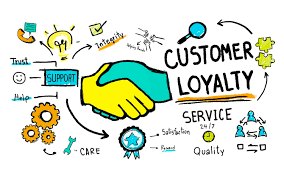Klaviyo Email Campaigns: A Guide to Effective Communication
May 16, 2025
Ron

In the realm of your email marketing strategy, Klaviyo stands as a powerful platform that empowers businesses to engage with their audience effectively. By creating and implementing Klaviyo email campaigns, you can craft personalised and highly targeted messages that resonate with your customers. In this article, we will explore the art of Klaviyo email campaigns, their components, and how to leverage this platform to enhance your communication.
Understanding Klaviyo
Klaviyo is a renowned email marketing platform that focuses on personalised communication, data-driven insights, and automation. With Klaviyo, you can create and manage email campaigns and automated messages that deliver the right message to the right audience at the right time.
Key Components of Klaviyo Email Campaigns
1. List Segmentation
- Description: Klaviyo allows you to segment your email list based on various factors like purchase history, location, and engagement level. Segmentation ensures that your emails are highly relevant to the recipient.
- Benefits: Increased open rates and engagement, leading to higher conversion rates.
2. Email Design
- Description: Klaviyo provides user-friendly email design tools to create visually appealing emails with drag-and-drop elements, custom branding, and templates.
- Benefits: Professional and eye-catching emails that captivate the recipient.
3. Automation Workflows
- Description: Klaviyo’s automation features allow you to create email workflows triggered by specific actions or events, such as abandoned carts, welcome series, or product recommendations.
- Benefits: Timely, personalised communication that enhances customer engagement and loyalty.
4. Personalisation
- Description: Klaviyo enables you to include dynamic content in your emails, addressing recipients by their names and recommending products based on their browsing and purchasing history.
- Benefits: Enhanced customer experience and increased likelihood of conversions.
Creating Effective Klaviyo Email Campaigns
To craft successful Klaviyo email campaigns, consider the following tips:
- Understand Your Audience: Know your audience’s preferences, behaviours, and needs to tailor your emails effectively.
- Compelling Content: Create engaging and valuable content that resonates with your audience.
- A/B Testing: Experiment with different subject lines, content, and design to determine what works best for your audience.
- Analytics and Iteration: Analyse campaign performance and use the data to refine your future emails for better results.
The Components of an Email Campaign
A successful email campaign consists of several key components that work together to engage your target audience and drive desired actions. These components include:
1. Audience Segmentation
- Description: Segmenting your email list based on factors such as demographics, location, or purchase history to send more relevant content.
- Benefits: Increased engagement and conversion rates as emails resonate with specific segments of your audience.
2. Compelling Content
- Description: Creating email content that is engaging, valuable, and relevant to your audience’s needs or interests.
- Benefits: Higher open and click-through rates, leading to increased conversions.
3. Email Design
- Description: Designing visually appealing emails that align with your brand, using templates and layout elements.
- Benefits: Professional and attractive emails that capture the recipient’s attention.
4. Subject Lines
- Description: Crafting concise and engaging subject lines that encourage recipients to open the email.
- Benefits: Improved open rates, which are critical for the success of your email campaign.
5. Call to Action (CTA)
- Description: Including clear and compelling CTAs that prompt recipients to take the desired action, such as making a purchase or signing up.
- Benefits: Increased conversion rates, leading to the achievement of campaign goals.
Creating an Effective Email Campaign
To create a successful email campaign, email marketers should consider the following best practices:
- Set Clear Goals: Define the objectives of your campaign, whether it’s increasing sales, raising awareness, or driving website traffic.
- Personalisation: Use recipient names and segment-specific content to make emails more personal.
- A/B Testing: Experiment with different elements of your email, such as subject lines and CTA buttons, to determine what resonates best with your audience.
- Mobile Responsiveness: Ensure your email design is responsive and optimised for mobile devices, as many recipients view emails on smartphones.
Analytics and Iteration
After launching your email campaign, the work doesn’t stop. Analyse the performance of your emails using key metrics such audience data such as open rates, click-through rates, and conversion rates. This data will provide insights into what’s working and what can be improved in future campaigns. Iteration and continuous improvement are key to long-term success.
Email Marketing Campaigns
Email marketing campaigns are a potent tool for connecting with your audience, driving action, and achieving your digital marketing objectives. By understanding the campaign content key components and best practices, and by using data-driven insights, you can create email marketing campaigns that resonate with your audience and deliver real results.
Understanding Customer Loyalty
Customer loyalty is a customer’s commitment to continually choose a particular brand or business over its competitors. It is a reflection of their satisfaction, trust, and emotional connection with the brand. Loyal customers are not easily swayed by price changes or flashy marketing campaigns, as they value the overall experience and relationship they have with a brand loyalty business.
The Significance of Customer Loyalty
Building customer segments and nurturing customer loyalty offers numerous advantages for businesses:
1. Steady Revenue Stream
- Loyal customers provide a consistent source of revenue, reducing the reliance on acquiring new customers to maintain profitability.
2. Reduced Marketing Costs
- It’s often more cost-effective to retain existing customers than to acquire new ones. Loyal customers require less marketing and promotional expenditure.
3. Word-of-Mouth Marketing
- Loyal customers become brand advocates, referring friends and family to your business. Positive word-of-mouth is a powerful marketing tool.
4. Feedback and Improvement
- Loyal customers are more likely to provide valuable feedback, helping businesses identify areas for improvement and innovation.
5. Resilience to Competition
- A loyal customer base can act as a buffer against competitive pressures, as customers are less likely to switch to a competing brand.
Building and Maintaining Customer Loyalty

To cultivate customer loyalty, businesses can employ various strategies:
1. Consistent Quality
- Consistently deliver high-quality products or services to meet or exceed customer expectations.
2. Personalisation
- Personalise interactions and communication to make customers feel valued and understood.
3. Loyalty Programs
- Implement loyalty programs that reward customers for their repeat business.
4. Exceptional Customer Service
- Offer exceptional customer service, resolving issues promptly and with empathy.
5. Engagement
- Engage with customers through social media, email, and other channels to build a sense of community and connection.
6. Feedback Loop
- Create a feedback loop where customers can express their opinions and concerns, and act upon this feedback for improvement.
Klaviyo email campaigns provide a powerful platform for businesses to communicate with their audience effectively. With its sophisticated segmentation, automation, and personalization features, Klaviyo allows you to craft tailored messages engaging content that drive engagement and conversions. By understanding your audience and following best practices, you can unlock the full potential of Klaviyo in your email marketing efforts.
FAQs
1. What is A/B testing in the context of email campaigns? A/B testing involves creating two versions of an email (A and B) with slight variations, like different subject lines or content. These versions of automated emails are sent to different segments of your email list, and the results are compared to determine which version is more effective.
2. How does Klaviyo handle subscriber consent and GDPR compliance? Klaviyo offers features to help businesses and subscribers comply with GDPR and other data protection regulations, including tools for consent management and data tracking.
3. Can Klaviyo integrate with e-commerce platforms? Yes, Klaviyo offers integrations with various e-commerce platforms like Shopify, WooCommerce, and Magento, allowing businesses to seamlessly connect their online marketing channel to stores and automate email campaigns based on customer actions.
4. Are there best practices for email subject lines in Klaviyo campaigns? Effective, subject line, lines are concise, engaging, and relevant to the email content. A/B testing can help determine which subject lines work best with your audience.
5. How can I measure the success of my Klaviyo email campaigns? Klaviyo provides detailed analytics, including open rates, click-through rates, conversion rates, and revenue generated from campaigns. By analysing these metrics, for example, you can gauge the success of your campaigns and make necessary improvements.
What it’s Like to work with Underground Ecom?

$1.9M
EMAIL MARKETING REVENUE
287%
Increase in
Revenue

37% OF REVENUE THROUGH EMAIL MARKETING

$1.9M
EMAIL MARKETING REVENUE
287%
Increase in
Revenue

37% OF REVENUE THROUGH EMAIL MARKETING